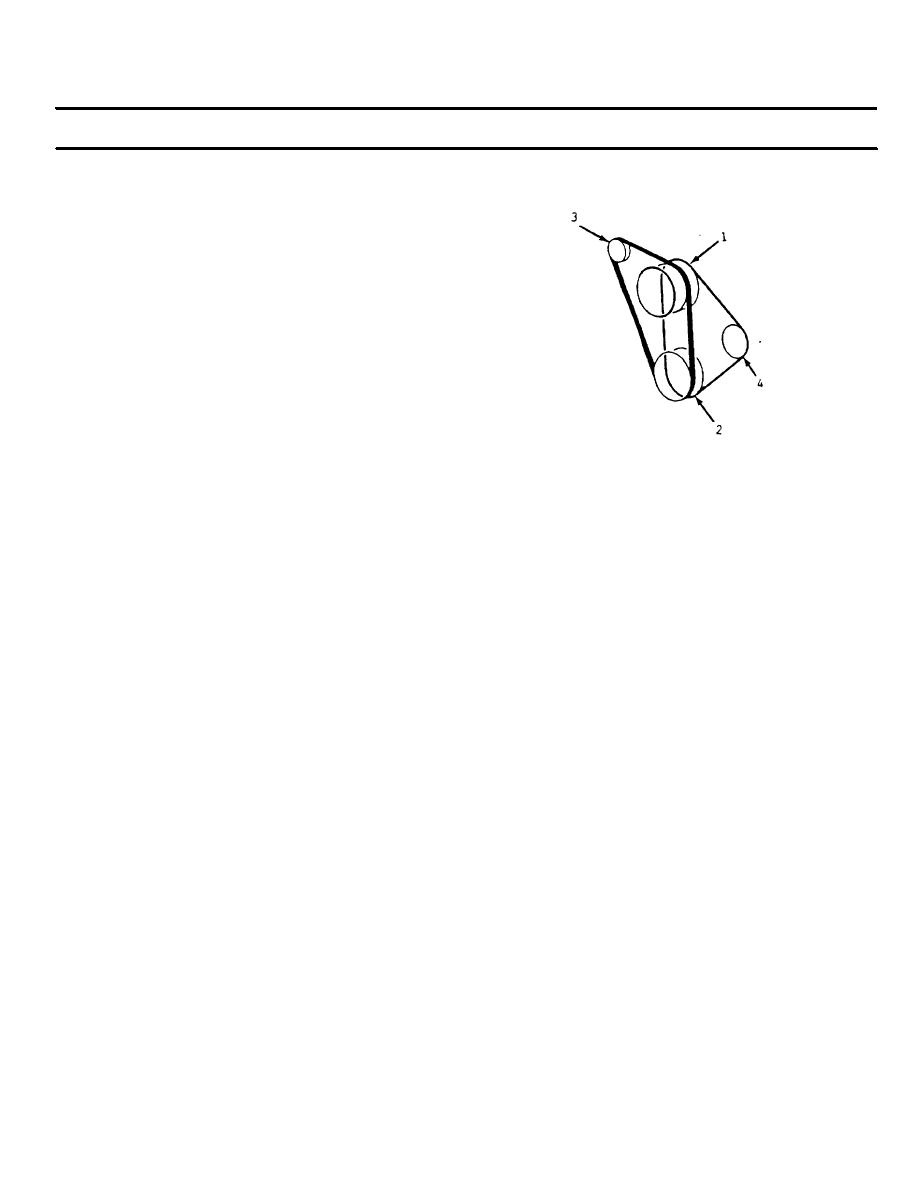 |
|||
|
|
|||
|
Page Title:
DRIVE BELTS REPLACEMENT - continued |
|
||
| ||||||||||
|
|
 TM 5-4210-224-14&P
4-76. DRIVE BELTS REPLACEMENT. (Continued).
CAUTION
Avoid over or under-tightening Avoid over
or under-tightening drive belts. Loose belts
result in slippage which can lead to belt and
pulley "glazing", and inefficient component
operation.
Once a belt has become
"glazed", it will be necessary to replace the
belt. Loose belts can also place high impact
loads on driven component bearings due to
the whipping action of the loose belt. Over
tightening belts can lead to bearing damage
and early belt failure.
b. Adjust belt to proper tension specification: New
Belt 146 lb (650 N), Used Belt 67 lb (300 N).
NOTE
A used belt is one that has been rotated at
least one complete revolution on the engine
e. Allow the drive belt to cool.
pulley. This begins the seating of the belt
and it must never be tensioned to new belt
f. Check the belt tension which should be 67 lb
specification.
(300 N).
ADJUSTMENT
c. Tighten the component to the mounting bracket
fasteners as follows:
CAUTION
Generator Adjustment Bolt
Avoid over or under-tightening drive belts.
20 ft-lbs (27 N-m)
Loose belts result in slippage which can
Generator Pivot Bolt
lead to belt and pulley "glazing", and
32 ft-lbs (43 N.m)
inefficient component operation. Once a
Power Steering Adjustment Bolt
belt has become "glazed", it will be
32 ft-lbs (43 N-m)
necessary to replace the belt. Loose belts
Power Steering Pivot Bolt
can also place high impact loads on driven
32 ft-lbs (43 N-m)
component bearings due to the whipping
action of the loose belt. Over tightening
d. Run the engine at idle speed for a minimum of
belts can lead to bearing damage and early
15 minutes, allowing the belt(s) to seat itself in
belt failure.
the pulley(s).
4-115
|
|
Privacy Statement - Press Release - Copyright Information. - Contact Us |